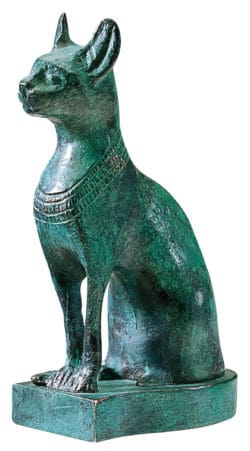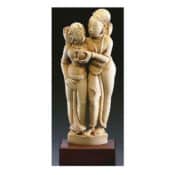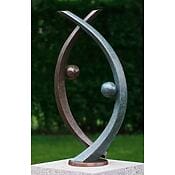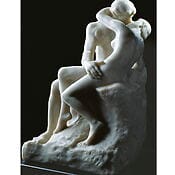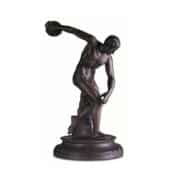As the guardian of home and hearth, Bastet became one of Egypt's most popular deities. As the state goddess of the Late Period, she represented the beneficent power of the sun. Original: Egyptian Museum, Cairo. Circa 1500 BC.
Finely patinated metal cast. Height with base 10 cm.
Contact Seller966XXXXX
Buy Artwork
€ 189,00
Following the expulsion of the 'Hyksos', there was a renewal of spiritual life and the arts. The Temple of Amun in Karnak and impressive Sphinx avenues were built. The terraced temple of Hatshepsut marked the beginning of a series of royal mortuary temples on the west bank of the Nile near Thebes. With the beginning of the Amarna period and the reign of Akhenaten (Amenhotep IV), there was a return to more 'human' proportions from colossal statues. The king was no longer depicted in his exalted divinity but in the circle of his family with the symbol of the sun's rays. The discovery of Tutankhamun's tomb and its treasures provided a deep insight into the art, culture, and daily life of an Egyptian pharaoh of the 18th Dynasty. Under the subsequent kings Seti I and Ramses II, Egypt experienced a building activity that allowed for no further increase, including the great hypostyle hall of Karnak and the rock temple of Abu Simbel. In sculpture, stone was replaced by metal. The large bronzes of the 22nd Dynasty finally led to the abundance of god and animal bronzes of the Late Period.
classicism
- Casting technology
- patina
metal
Replica
- Antiquity
- Religious motifs
- Animals
green
- (Office) Desk
- Side and lowboards, consoles, fireplace mantel
- Pedestal / Podium
- Indoor
- Solo Placement
- African
- Eclecticism
- Elegant
- Ethno style
- Exotic
- Eccentric
- folklore
- Classic


